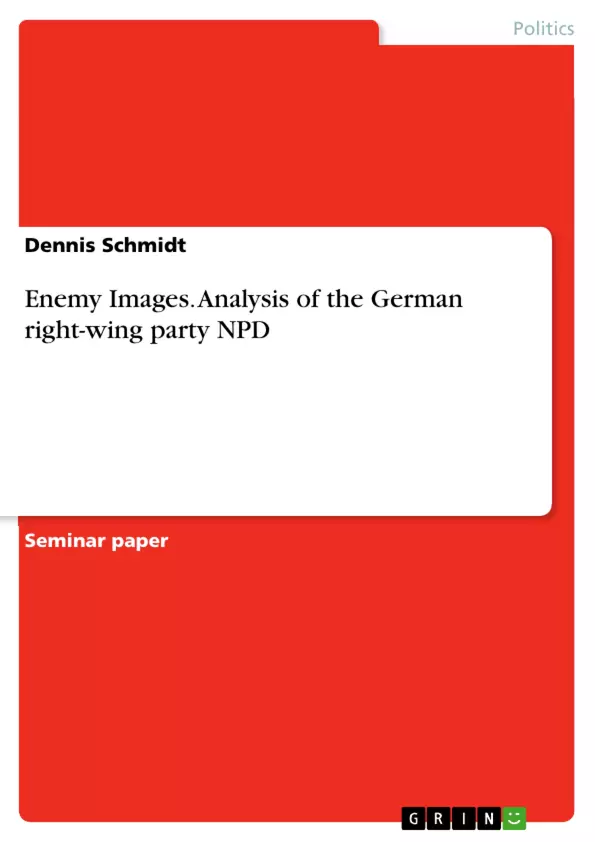The following text will mainly concentrate on the concept of enemy image. In the Oxford Dictionary the word enemy is defined like this: An enemy is „a person who is actively opposed or hostile to someone or something“. Indeed, hostility and opposition play an extremely important role not only in our everyday individual life, but of course also in political relations – national and international – and social relationships. We a confronted with news about hostility and enemies every day by our newspaper, television, radio and the Internet because the phenomenon of enmity is present all over the world and can be seen as an ineradicable characteristic trait of humanity.
The paper will firstly analyse the concept enemy image by consulting different authors and academic text concentrating on the question: How can we define an enemy image? Afterwards it will discuss, if one can recognize a certain similarity in the way political actors create an enemy image by the question: Which patterns tend to reoccur when enemy images are produced? Finally, the consequences of enemy images when they are accepted in society play a role. When we go back in history, we can find uncountable examples of enmities which had war, violence and suffering as consequence: Religious groups like Christians fought against Muslims in several crusades, whole nations have become hereditary enemies such as Germany and France after 1800 or several nations formed alliances to combat one big enemy like Hitler and his Nazi Germany during World War II. The next part of the essay will focus on an empirical example, namely the extreme right-wing party in Germany, the Nationaldemokratische Partei Deutschlands (the National Democratic Party). It will elaborate on how they deliver their views upon immigration, non-Germans and Germany itself by analysing their homepage (npd.de) in order to discover how they treat the concept of enemy image in their political program and try to find out in how far their adoption of enemy images fit into the results worked out the chapter before. I chose that party as my empirical example, because for me as a German, it is very interesting to see how the Nationalists try to justify their anti-democratic, non-multicultural and nationalist ideas by creating enemy images in order to gain voters and popularity amongst the population. [...]
Inhaltsverzeichnis (Table of Contents)
- INTRODUCTION
- ENEMY IMAGES
- THE NPD AND THEIR ENEMY IMAGES
- CONCLUSION
Zielsetzung und Themenschwerpunkte (Objectives and Key Themes)
This text analyzes the concept of "enemy image" as a tool used by political actors, particularly focusing on the German right-wing party NPD. It examines how enemy images are constructed and the consequences of their acceptance in society.
- Definition and creation of enemy images
- The role of propaganda in shaping enemy images
- The psychological basis of enemy images
- The impact of enemy images on political discourse and social relations
- The use of enemy images by the NPD
Zusammenfassung der Kapitel (Chapter Summaries)
- Introduction: This chapter introduces the concept of enemy images, discussing their importance in individual and societal life. It also outlines the structure of the text and introduces the focus on the NPD.
- Enemy images: This chapter explores different perspectives on enemy images from various authors, examining their definitions and characteristics. It analyzes different types of enemies, including symbolic, withholding, worthy, and oppressive enemies.
- The NPD and their enemy images: This chapter analyzes the NPD's use of enemy images in their political discourse. It examines their views on immigration, non-Germans, and Germany itself, exploring how they construct and utilize enemy images to achieve their goals.
Schlüsselwörter (Keywords)
Key themes and concepts explored in the text include enemy image, political discourse, right-wing extremism, propaganda, national identity, and the NPD. The text focuses on the creation, use, and impact of enemy images, particularly within the context of the German political landscape.
- Quote paper
- Dennis Schmidt (Author), 2013, Enemy Images. Analysis of the German right-wing party NPD, Munich, GRIN Verlag, https://www.grin.com/document/295915



